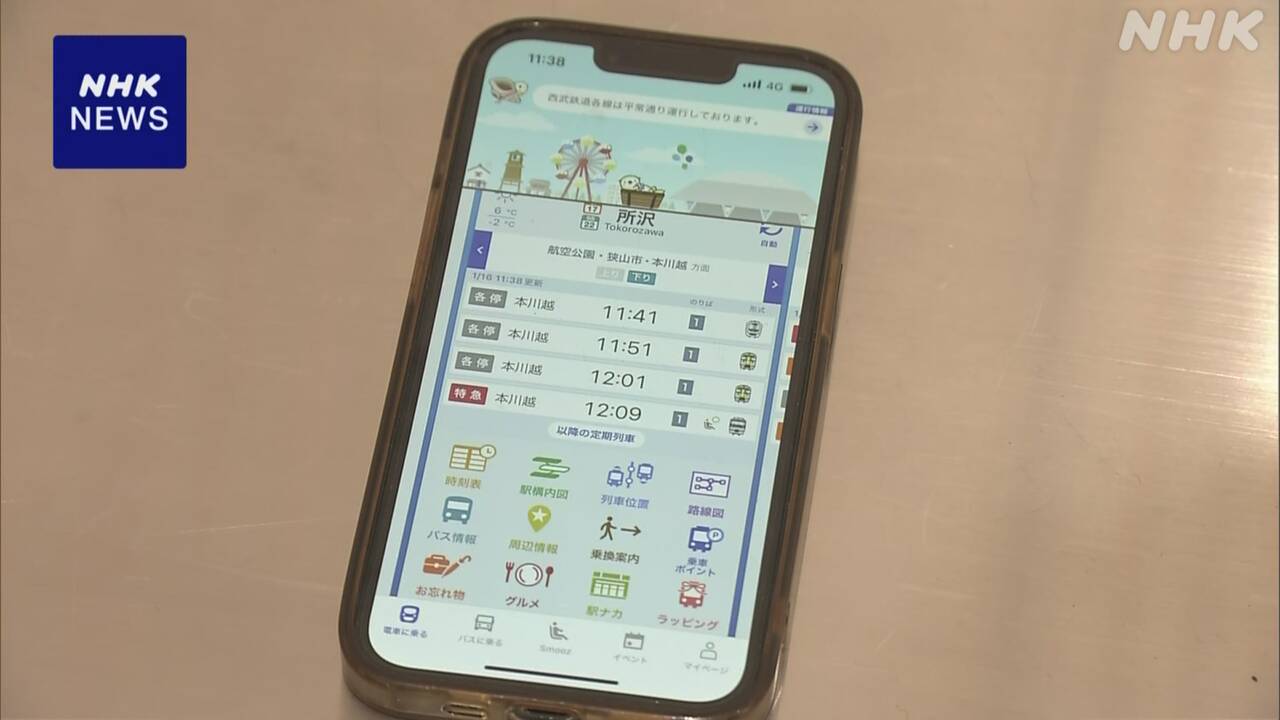Regarding the ``timetables'' posted at stations, there are moves among railway companies to reduce the number of timetables posted in stations and consolidate them, due to the spread of smartphones and cost reductions, and to provide information on websites where timetables are posted. is expanding.
The Nagoya Municipal Subway, which operates six of these lines, has decided to remove all timetables on the station platforms by March in line with schedule revisions.
We continue to post timetables near station ticket gates, and are also posting QR codes that link to our website so that people can check the timetables on their smartphones.
According to the Nagoya City Transportation Bureau, the cost of posting new timetables in accordance with timetable revisions, etc. for each route, including printing costs and personnel costs, is approximately several million yen.
Takao Niwa of the Nagoya City Transportation Bureau Sales Headquarters Train Division Station Affairs Division said, ``Although the number of passengers is on a recovery trend, it is below the level before the coronavirus outbreak, and expenses are increasing due to rising prices, so we are in a situation where we need to cut costs.'' We were talking.
Seibu Railway in the Tokyo metropolitan area has also removed timetables from 88 of its 91 stations. The reasons behind
this include the installation of electronic bulletin boards that notify people of the next train, and
the spread of the company's app that allows users to check timetables and train locations.
However, for passengers who do not have smartphones, a printed timetable is distributed free of charge at the counter.
Although this company has reduced the number of timetables posted at stations, it always leaves one near the ticket gate or vending machine where it can easily be seen by passengers.
Among other railway companies,
▽Nankai Electric Railway is increasing the use of QR codes at some stations, and
Tobu Railway and JR companies are reducing the number of timetable postings at some stations.
All timetables removed for Nagoya Municipal Subway users
We asked people who use the Nagoya Municipal Subway about the reduction in the number of timetables posted at stations.
A man in his 20s said, ``I use the Tsurumai Line, but it doesn't take long until the next train arrives, so I don't really check the timetable.''
A woman in her 50s said, ``I only occasionally look at the timetable on the platform to see what time the next train will arrive.I search for routes on my smartphone to find out how long it will take to arrive at my destination.'' I was talking.
A man in his 70s said, ``I sometimes look at the timetable on the platform, but there are a lot of trains running on the Nagoya Municipal Subway, so I think it's different from stations where there are fewer trains.However, there are stations where there are fewer trains. I think it's better not to remove it because it would be a problem if there was no timetable on the platform.''
A woman in her 70s said, ``It's a bit of a problem when I am asked to check the timetable on a website.I have a smartphone, but I don't know how to use it so I mainly use the phone.The same may apply to receipts and bills. However, I think many elderly people would prefer paper, even if it costs money."
In addition to timetables, there is also a movement to review station facilities.
In addition to timetables, there is also a movement among railway companies to review station facilities.
Among these, JR East will remove obsolete clocks installed in station premises at approximately 500 stations, or approximately 30% of the stations within its jurisdiction, over a period of 10 years starting in 2021. The plan is to proceed.
The reason for this is that with the spread of mobile phones and smartphones, passengers can now check the time from other sources than station clocks.
On the other hand, railway companies are taking advantage of the national toll system that raises fares in order to make stations barrier-free, and are installing elevators, platform doors to prevent falls, and information on delays and suspensions for people with hearing impairments. The company is currently working on installing equipment that will display text on the screen.
In some cases, notices will continue to be posted at ticket gates, etc.
According to the Ministry of Land, Infrastructure, Transport and Tourism, based on the ``Railroad Transportation Regulations'' established in 1944, timetables must be posted at stations.
For this reason, some railway companies have taken steps to remove timetables from platforms, etc., but continue to display them near ticket gates and ticket vending machines.
Expert: ``Make sure people are more informed about timetable changes, etc.''
Regarding the movement to remove timetables and clocks from stations, Kazuhiko Makimura, director of the Institute of Metrology and Planning, who is an expert on public transportation, said, ``Railways are an important means of transportation for the elderly and others, and we will continue to carefully display timetables and other information.'' I think it is essential to communicate this information.Also, if there are fewer timetables on platforms, it may be difficult for users to notice when the last train is moved forward or the number of trains is reduced due to schedule revisions. I think there will be more.I hope that railway companies will be more thorough than ever in disseminating information about changes to timetables and reviews of operating policies.''

